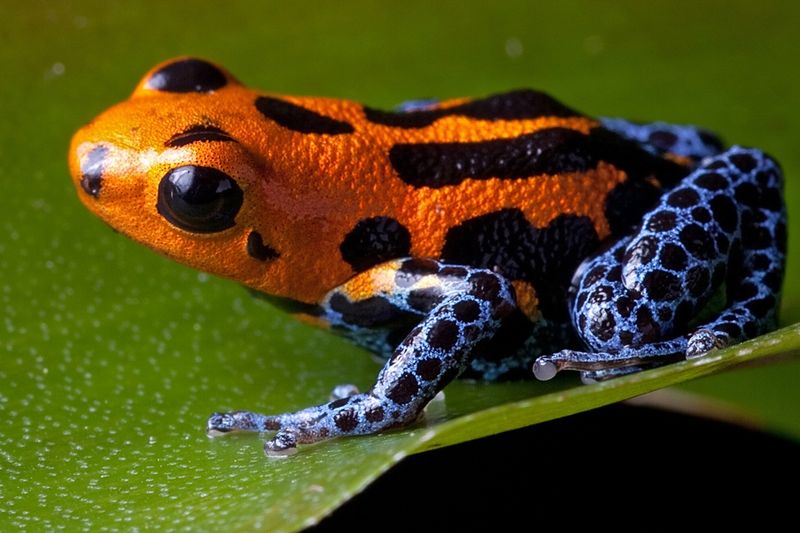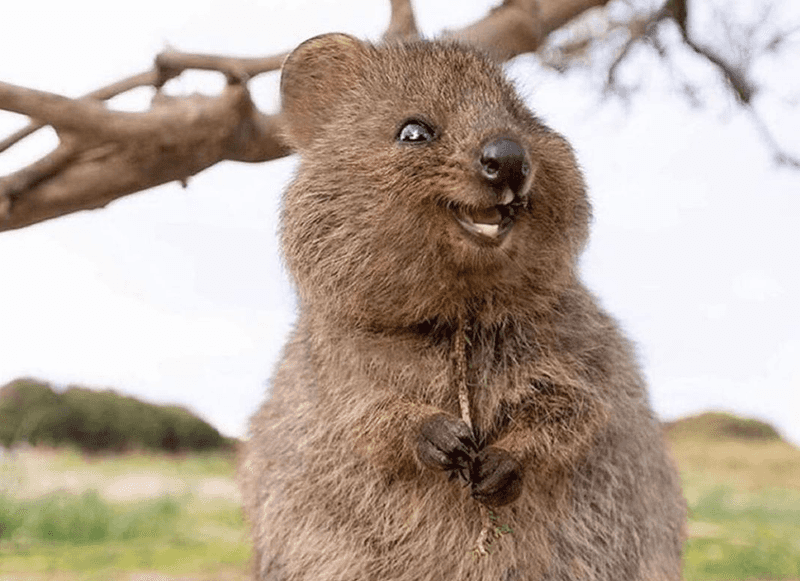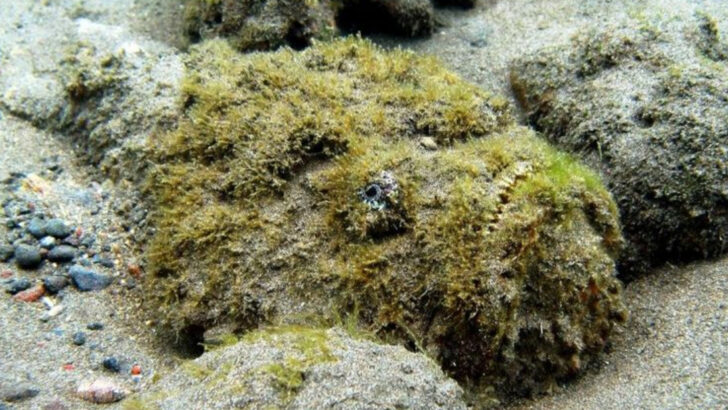That adorable fluffball? It might be lethal.
The animal kingdom doesn’t play fair. Some of the deadliest creatures on Earth don’t snarl, growl, or flash fangs—they wink, waddle, or purr. Meanwhile, others you’ve never even heard of could end your day before you finish your sandwich.
Looks deceive. Badly.
We’re talking about frogs that could drop a full-grown human, fish that carry invisible poisons, and insects with silent, terrifying power. And then there are the ones that look like they belong in a child’s bedroom—until you read the warning labels.
Prepare to rethink every creature comfort you’ve ever had.
Here are 10 surprising animals that can kill you—and 3 more that look like plush toys, but absolutely aren’t.
Blue-Ringed Octopus

In the quiet depths of the ocean, the blue-ringed octopus hides a deadly secret. Small yet mighty, its venom can cause paralysis or even death. Its vivid blue rings serve as a warning to predators. Despite its beauty, this creature is one to be wary of. The venom contains tetrodotoxin, a potent neurotoxin. Did you know? One octopus carries enough venom to kill 26 adult humans. Always admire from a distance if you ever encounter this mesmerizing yet dangerous sea dweller. It’s a marvel of nature with a lethal twist, beautiful yet deadly.
Cone Snail

The cone snail might appear as an innocuous sea snail, but beneath its ornate shell lies a deadly weapon. Known for its beautifully patterned shells, it harbors a venomous sting capable of paralyzing prey instantly. The venom contains conotoxins, which can be fatal to humans. Interestingly, each species of cone snail has a unique venom cocktail. Swimmers and divers should tread carefully in tropical waters, where these snails reside. While not aggressive, they strike with precision when threatened. The cone snail’s beauty is a dangerous façade, reminding us that not all that glitters is harmless.
Pufferfish

Often seen floating with an inflated body, the pufferfish is deceptively dangerous. When threatened, it swells up, revealing spines and a potent toxin. The toxin, tetrodotoxin, can be more lethal than cyanide. Despite its appearance in aquariums and as a delicacy in some cultures, improper preparation of this fish can be deadly. Chefs in Japan train for years to serve it safely as fugu. Its goofy look is a stark contrast to its perilous nature. Pufferfish are a testament to nature’s ingenuity, where cuteness meets danger beneath the waves, offering a fascinating yet perilous encounter.
Box Jellyfish

Gliding through the ocean’s depths, the box jellyfish is a silent yet formidable hunter. Its transparent body makes it almost invisible, but its sting is unmistakably dangerous. With tentacles laden with venomous cells, it can cause cardiac arrest in humans. This sea dweller is found primarily in the Indo-Pacific region. Its sting, often fatal, demands immediate medical attention. Despite its ethereal beauty, the box jellyfish embodies the ocean’s lethal side. Its gracefulness belies the danger it poses, a reminder that the sea holds many secrets, some of them more perilous than they appear.
Stonefish

The stonefish is nature’s master of disguise. Lying motionless on the ocean floor, it resembles a mere rock. However, step on it, and its venomous spines deliver a painful surprise. Known as one of the most venomous fish, its sting can cause shock, paralysis, or even death if not treated promptly. Found in the coastal regions of the Indo-Pacific, the stonefish’s camouflage is its greatest weapon. While it doesn’t seek out humans, accidental encounters can be deadly. This fish illustrates nature’s skill in blending beauty with danger, hidden in plain sight beneath the waves.
Poison Dart Frog

In the heart of the rainforest, the poison dart frog stands out with its brilliant colors. These tiny amphibians wear their toxicity proudly. Indigenous tribes used their secretions on blow darts. Their skin secretes potent toxins, capable of causing paralysis and death in predators. Despite their size, their defense mechanism is highly effective. Found mainly in Central and South America, their vibrant colors serve as a warning. Fascinatingly, their toxicity is derived from their diet. Poison dart frogs highlight nature’s paradox: small but mighty, a delightful yet dangerous spectacle in the rainforest.
Deathstalker Scorpion

Roaming the deserts of North Africa and the Middle East, the deathstalker scorpion is feared for its potent sting. With a name that hints at its deadly nature, it’s highly venomous, capable of causing severe pain or even death. Its venom is a complex mixture of neurotoxins. Surprisingly, research is being conducted to use its venom in treating brain cancer. This scorpion is both feared and fascinating. Despite its small size, it’s a formidable predator. The deathstalker’s name alone evokes trepidation, yet it’s a reminder of nature’s dual role as both dangerous and potentially beneficial.
Black Mamba

The black mamba, known for its speed and venom, prowls the African savannah. Its name may mislead, as its skin is actually brown; the interior of its mouth is black. This snake can strike multiple times, delivering a neurotoxic venom. In the wild, it’s both respected and feared. Although encounters with humans are rare, they can be deadly. The black mamba’s reputation precedes it, often being referenced in popular culture as the epitome of danger. Agile and swift, it embodies the lethal beauty of wildlife, a creature that commands awe and caution in equal measure.
Hippopotamus

Despite its seemingly docile nature, the hippopotamus is one of Africa’s most dangerous animals. With massive jaws and a territorial temperament, it can be surprisingly aggressive. Responsible for more human deaths than lions, hippos are not to be underestimated. Their enormous mouths house powerful teeth capable of crushing. Typically, they spend their days submerged in water to stay cool. However, on land, they are agile and swift. The hippo is a paradox of nature – appearing gentle yet capable of immense power and aggression. Its imposing presence in Africa’s rivers is both majestic and fearsome.
Cassowary

With its striking appearance, the cassowary is often underestimated. This large flightless bird, found in Australia, has a reputation for aggression. Equipped with powerful legs and sharp claws, it can inflict serious injury. Known as the world’s deadliest bird, the cassowary can run and jump with agility. Their striking blue and black feathers belie their dangerous nature. While they mainly feed on fruits, their territorial behavior can be threatening. The cassowary is a reminder not to judge by appearances – its vibrant colors distract from the danger it poses, a true embodiment of beauty and beast.
Red Panda

The red panda, with its fluffy tail and masked face, is a favorite among animal lovers. Found in the Eastern Himalayas, they spend most of their time in trees. While they look like stuffed toys come to life, red pandas are solitary and territorial. Feeding mainly on bamboo, their diet is supplemented with fruits and eggs. Their playful antics and endearing appearance often overshadow their wild nature. Red pandas are a conservation symbol, highlighting the delicate balance of nature. They remind us that even the most adorable creatures have a role in the wild tapestry of life.
Quokka

Meet the quokka, often called the world’s happiest animal. Found on Australia’s Rottnest Island, they are marsupials with a seemingly permanent smile. Known for being friendly to humans, quokkas have become social media stars. Despite their cuteness, they are wild animals with specific dietary needs. Visitors are advised not to feed them human food. Quokkas thrive in their natural habitat, where they hop around joyfully. Their endearing expression and approachable demeanor make them resemble living plush toys. The quokka’s charm is irresistible, a reminder of the joy found in nature’s diversity and the importance of preserving it.
Kinkajou

The kinkajou, or “honey bear,” is an adorable inhabitant of Central American rainforests. With its large eyes and playful nature, it resembles a cuddly toy. Kinkajous are nocturnal and arboreal, feeding on fruits, nectar, and insects. While they appear gentle, they can be defensive if threatened, using sharp teeth. They play a crucial role in pollination, supporting their ecosystem. Often kept as exotic pets, it’s essential to remember their wild nature. The kinkajou’s teddy bear-like appearance belies its true wild spirit, a captivating creature that enchants those lucky enough to spot it in the wild.

